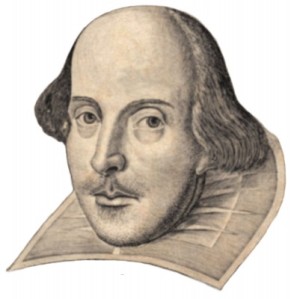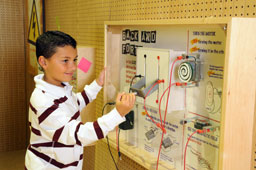 Uncovering Literature-Phobia in Secondary English Classrooms
Uncovering Literature-Phobia in Secondary English Classrooms
by Anastasia Teasley
Comment on this post and be entered to win a $20 School Box Gift Card…no strings attached! :-)
It can be difficult to present Shakespeare (or other curriculum-required writers) to high school students summoned to their seats at 8:00 in the morning with nothing on their minds but not to be there. Students commonly find these writers to be too hard to read, outdated by a few hundred years, or boring—having no practical application in their own drama-filled lives. While looking for creative ideas to teach Hamlet, I discovered wonderful approaches to presenting literature that I believe will benefit other teachers looking for inspiration.
The English Journal, a resource for teachers published by the National Council of Teachers of English, provides journal articles written by professionals who have faced down their own classroom’s challenges. Here are some of their unique ideas:
- “Using the Original Approach to Teach Shakespeare” by Bruce Robbins: Role Play! Let the students read over a piece of literature and clarify any uncertain words or meanings. Have the students act out the parts, but not just by reading out of the book. Robbins had students read the same text in different ways from a script made on homemade scrolls. The students not only identified with a character’s situation, but they identified with another student’s perspective and had fun doing it.
- From Tabes-Kawk: Use Music! Have students pick out music that, in their opinion, would best fit a scene of a story. Encourage students to bring music from home and play the music while the student reads that scene aloud and justifies their musical choice with a literary explanation. Says Tabes-Kawk, “This assignment brought even the toughest student to class on time with a rewarding, ‘this is awesome!’”
- From Cindy Bowman and Brendan Pieters: Use WebQuest! WebQuest is a computer program that incorporates the Internet, word processing, and story building programs to stretch a student’s understanding of a literary work. The students can research a play, write something about it, and build a model of a particular scene or act. The program pre-approves appropriate sites for use beforehand, allowing students to have access only to scholarly resources. Students can do everything from creating their own story boards to designing costumes and stages.
- Chat It Up! By using chatting software, teachers can group students in partners or small groups, where they then take on a character’s role and chat to each other based on the story line. These chats are recorded and can be printed for a grade. Discuss (http://www.discussware.com/discuss/) is an example of this software.
Hopefully these techniques will work to bring Shakespeare (and his peers) into the 21st century for your students!
Anastasia Teasley is a freelance writer with a bachelor’s degree in English from Kennesaw State University. Read more by Anastasia at www.tandemmedia.net.







![Microsoft PowerPoint - Hamburgerchart [Read-Only] Microsoft PowerPoint - Hamburgerchart [Read-Only]](https://schoolbox.files.wordpress.com/2009/10/hamburgerchart-2.jpg?w=300&h=198)



